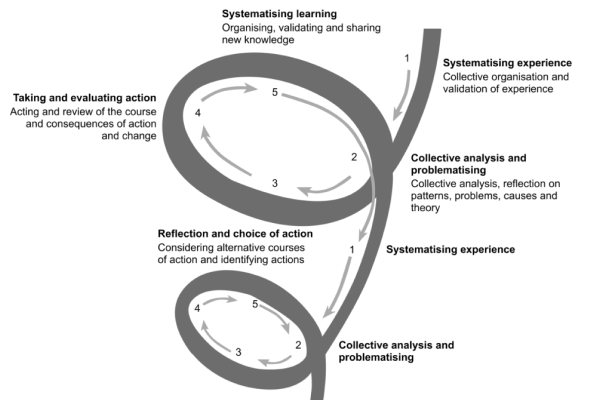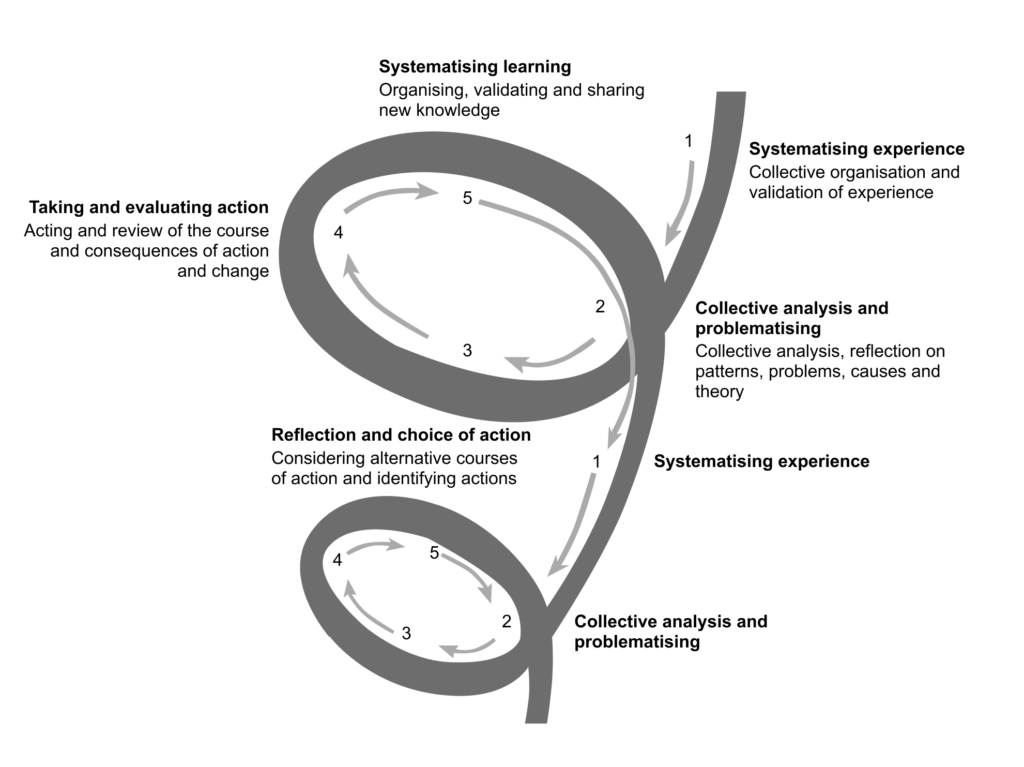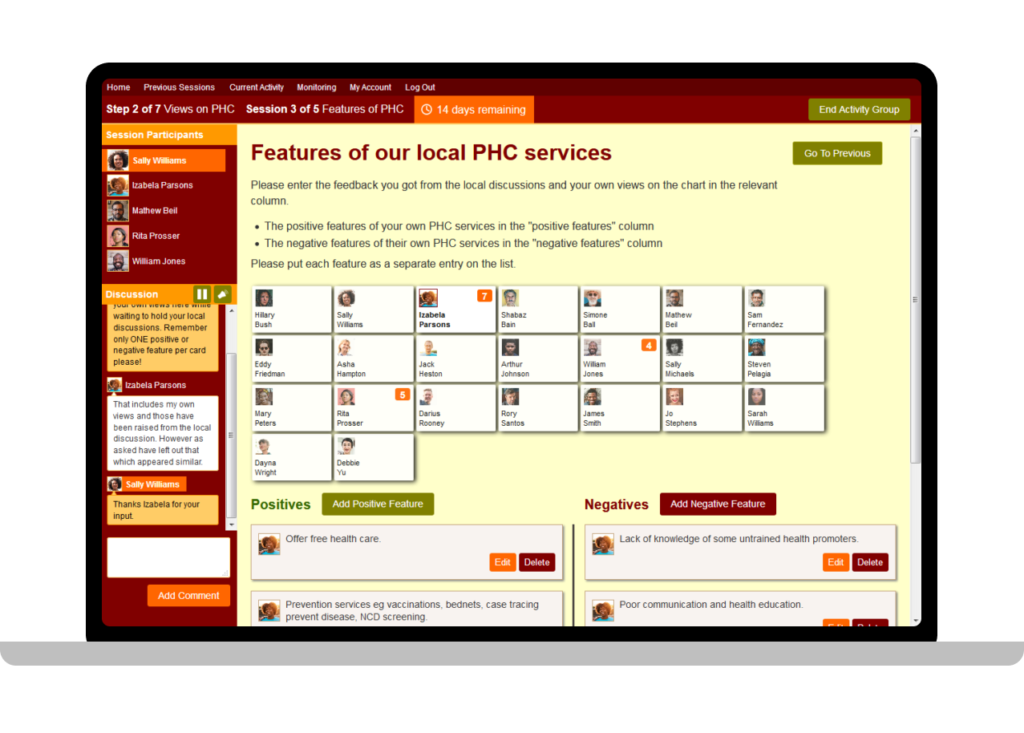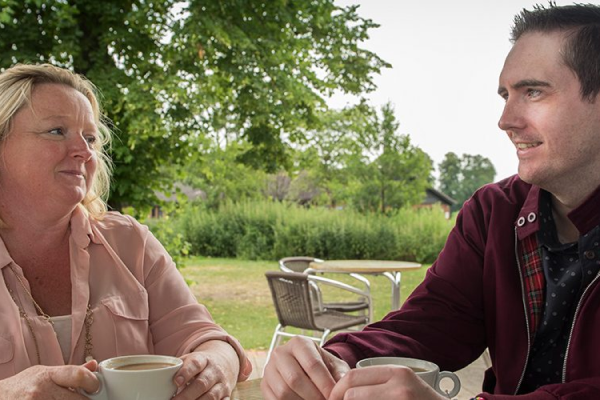Participatory Action Research (PAR)
Maldaba have collaborated with the Training and Research Support Centre (TARSC) to create a web-based digital platform for the Participatory Action Research (PAR) process.

We have appreciated Maldaba’s inquiring and interactive approach, commitment and creativity in building our shared understanding for the complex task and of bringing together software design and people driven process.
Dr Rene Loewenson, Director, Training and Research Support Centre (TARSC)
The challenge for PAR
PAR is a long-used and complex technique for removing the barriers in research between researchers and the subjects of the research. Heavily rooted in academic understanding of health research, the PAR process is a cyclical process that creates a collaboration between researchers and subjects, systematising experiences, collectively analysing and reflecting, agreeing and implementing actions to change the situation, and systemising learning. At its heart, PAR keeps the subjects, as knowledgeable and experienced participants, actively engaged in the research and actioning change to their circumstances as part of the research.
What we did
- Co-production
- Visual Design
- User Experience Design
- Front-End Development
- Web Development
- Rapid Prototyping
- Stakeholder Engagement
- Technical Architecture
- Framework Development
A single PAR process can take months to complete, with multiple steps and stages. PAR is highly discursive, collaborative and very visual, often working with people in rural areas with varying levels of education and experience.
PAR processes require lots of resources: time, money, travel. The community identified a need for a web-based implementation that would allow a process to take place online, accounting for geographical distance and allowing users to participate at time that suited them, fitting around their busy working and personal lives.

TARSC has worked with Maldaba on developing a web platform that may allow us to build on our decade of local participatory action research in east and southern Africa in EQUINET to facilitate an online, multicountry process applying participatory action research principles. We have appreciated Maldaba’s inquiring and interactive approach, commitment and creativity in building our shared understanding for the complex task and of bringing together software design and people driven process.
Dr Rene Loewenson, Director, Training and Research Support Centre (TARSC)

In collaboration with TARSC, Maldaba have innovated a ground-breaking new PAR Online platform. Designed to work in areas with low Internet bandwidth, and poor/old IT infrastructure, PAR Online is a highly visual tool that enables real-time collaboration, mimicking may of the offline PAR process. For example users can move ‘stones’ to indicate their votes, which are visually represented to users.
Users can chat in real-time to discuss issues as if they were present together in a single physical space. The facilitator has tools to direct conversation and set pace/tone.
Some technology did not exist to achieve this software and Maldaba engineered into our framework, MAF, a web socket server with AJAX fall back to accommodate the project’s requirements. Version 1 of PAR Online is currently in use across various countries in East Africa, including Malawi, Tanzania, Uganda, Zambia and Zimbabwe.
It was like being in the same room with everyone!
PAR Online Participant
Get in touch with us to find out for yourself how we can help you and your organisation.
Find out how we can help you
Related Case Study – Lumis
Maldaba collaborated with Together to understand, and overhaul their case management systems, consolidating them into an organisation-wide application that fits the needs of this growing organisation.

Who are we and what do we do?
We are a team of highly experienced developers, designers, and project managers with expertise in web development, app development, data management, digital transformation, and integration with third-party systems.
We work closely with third sector operations leaders to develop innovative and user-friendly software solutions designed to solve complex problems, make processes more efficient, demonstrate the impact of research and, ultimately, deliver long-term positive change.

